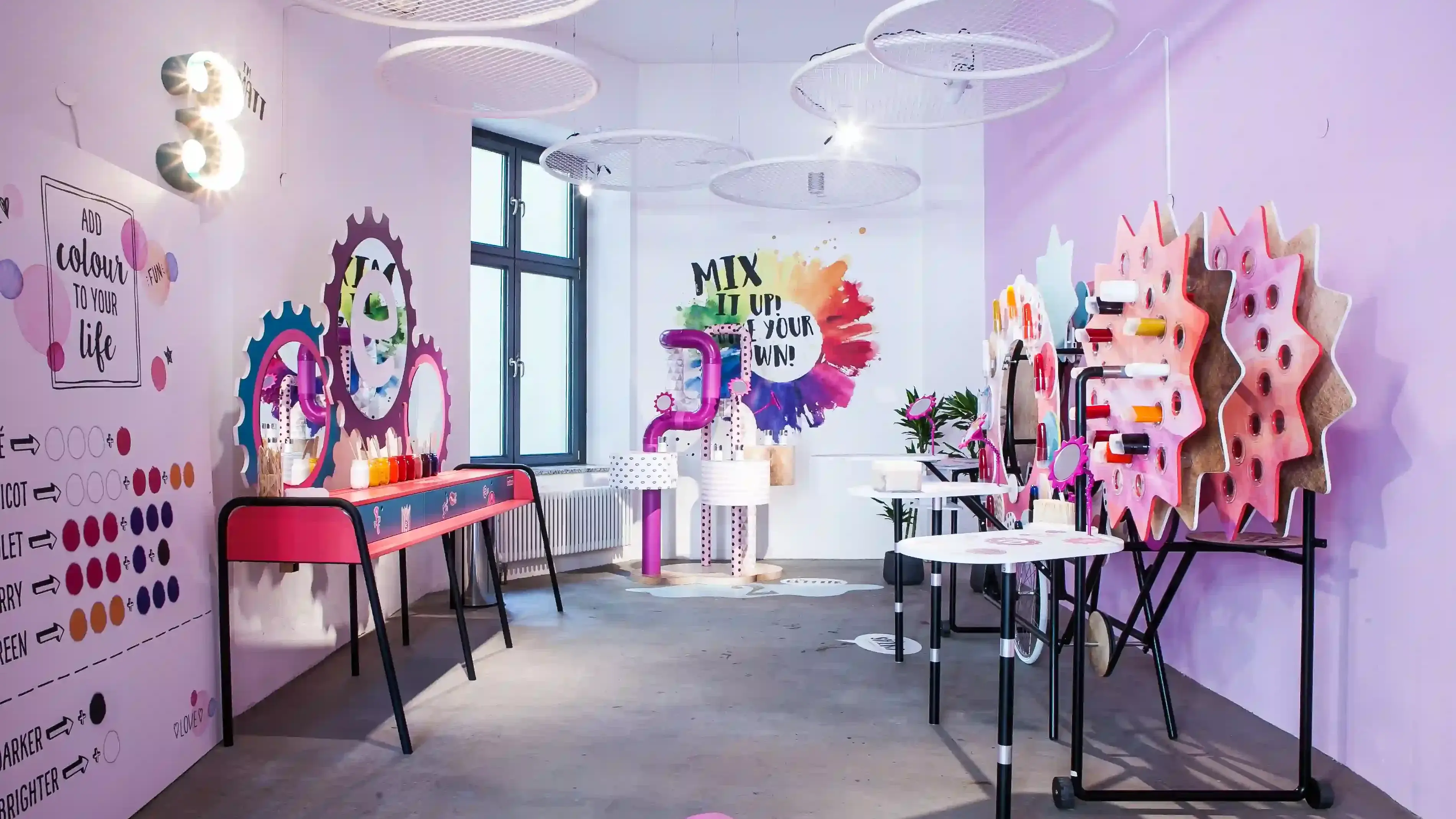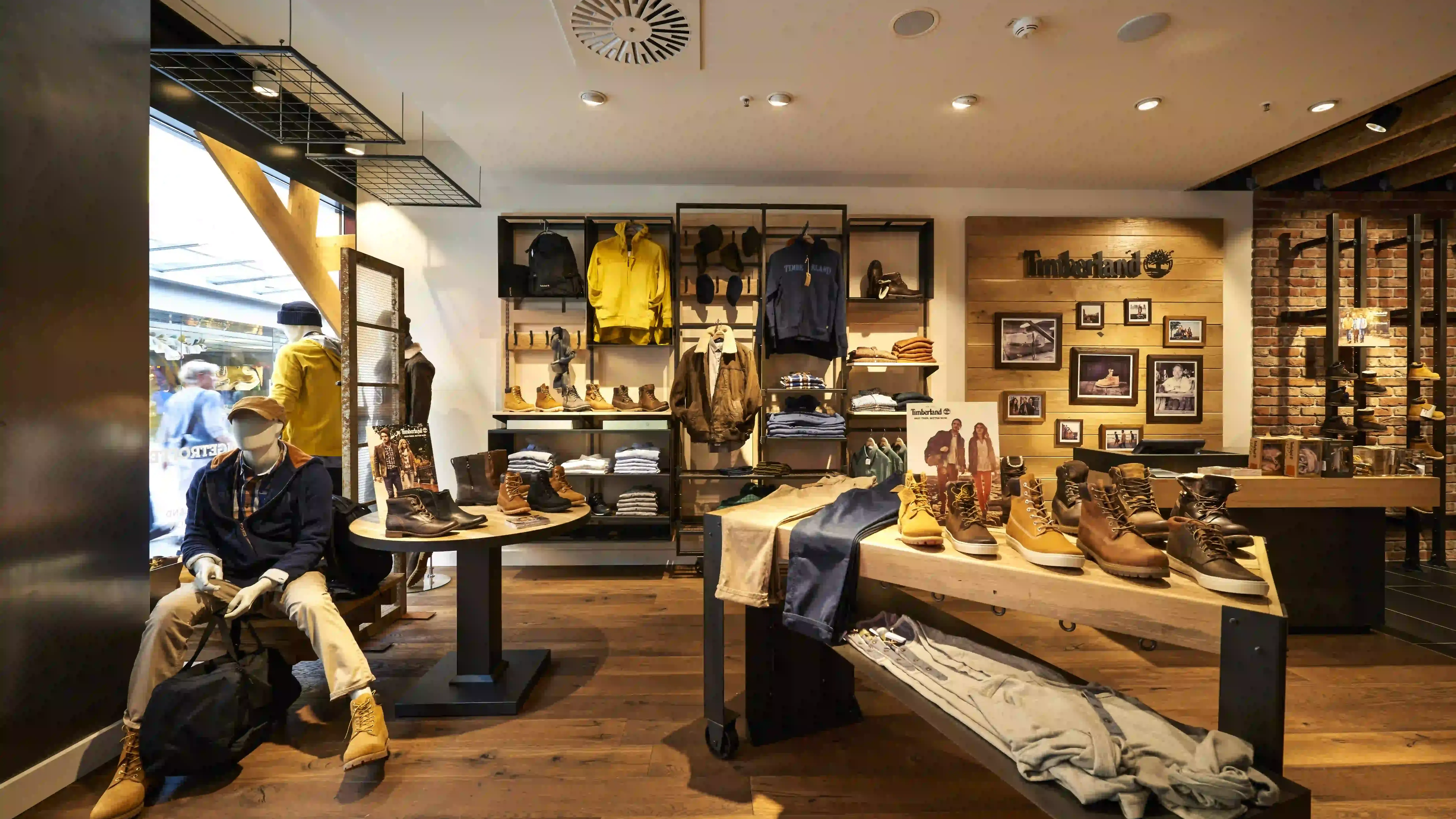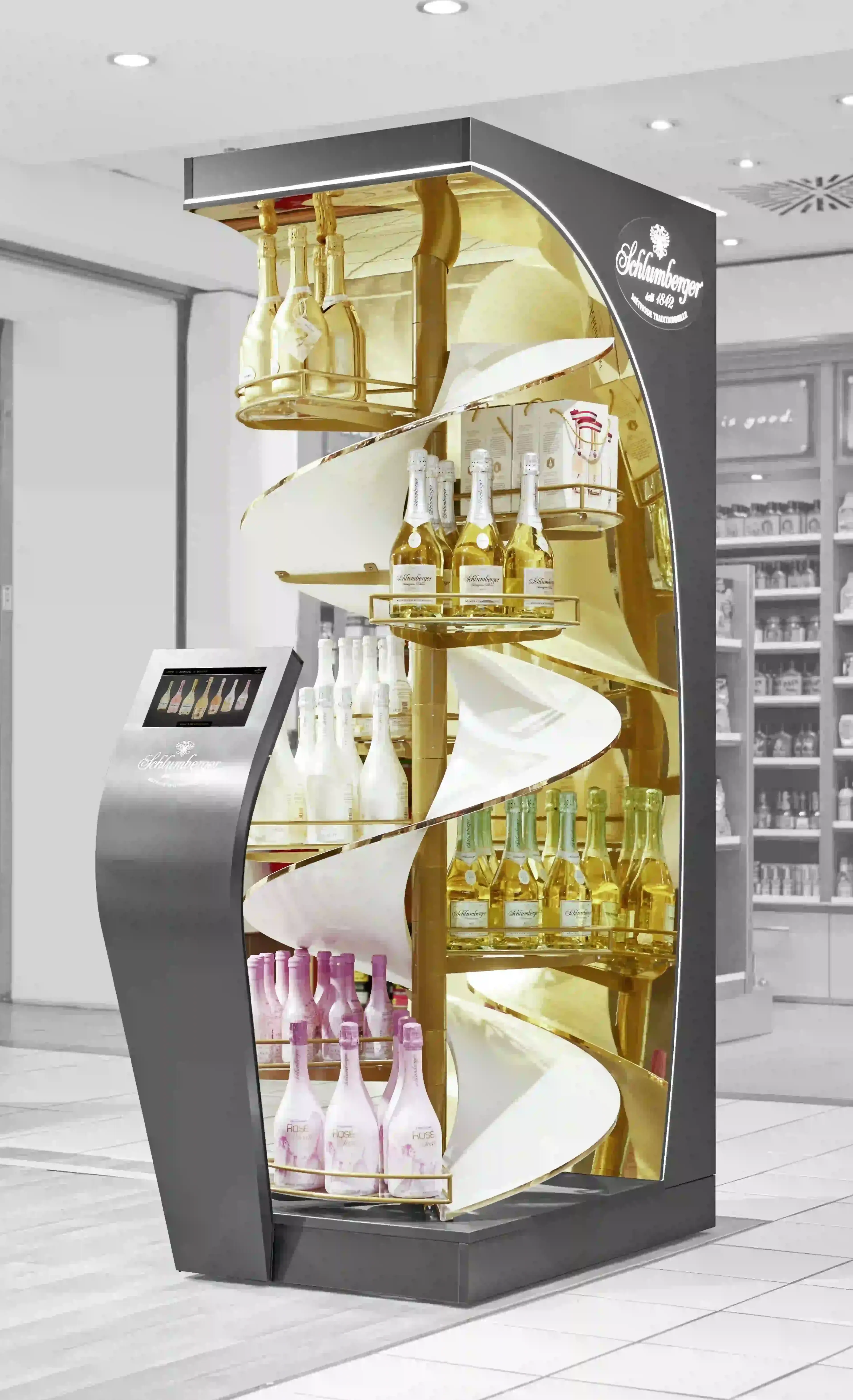Point of Sale Design – Influencing The Purchasing Decision
All retail environments feature certain areas of particular interest to the retail design discipline. The point of sale is perhaps the most prominent such area. Because of the unique nature of the POS on its various levels and their requirements in terms of marketing, point of sale design has become its very own dedicated discipline. It takes extensive experience and knowledge of the unique aspects of the POS concept on all levels to fully utilise its marketing potential – and ARNO has been gathering this exact experience in the shopfitting business for over 85 highly successful years.
Unique Marketing Situations Require Unique Strategies
The point of sale – also frequently referred to as the point of purchase (POP) from the shopper’s point of view – is usually taken to refer to any environment in which customers have direct contact with the products on sale – in other words: those environments in which the actual purchase is finalised. When applied very narrowly, the phrase may refer specifically to the checkout counter area or even the minute details of positioning products on a shelving unit or similar fixture. On the macro scale, a shop in shop system or even an entire store itself can be understood to be the point of sale in relation to the shop or overall shopping environment they are positioned in, respectively. This requires applying retail design principles to the entirety of a store’s layout.
Aspects of the Checkout Area
When concentrating on this particular aspect of point of sale design, the unique sales situation in this zone needs to be taken into account. The problem here is simple – at the time when customers have reached the checkout area, it may already be too late for most of the more elaborate methods of retail design to successfully influence them. This is because this area’s chief purpose from the customer’s point of view is to finalise the sale – as most larger-scale retail outlets today employ separate dedicated help desks for actual customer services. Coupled with the pressure of wanting to exit the store without holding up a queue, this makes the checkout area a point of sale zone that is only fit for a very limited number of applicable marketing strategies.
Point Of Sale Product Positioning Considerations
Throughout the main store area, people may interact with a number of products at the displays, shelves, gondolas and other fixtures. And more often than not, customers may arrive at a purchasing decision spontaneously after interacting with the products on display at the point of sale. As the old adage goes: if you can get a customer to pick up a product, they will likely end up buying it. This insight may lead to a number of POS design decisions.
For example, displays, gondolas or shelving units need to be stocked in such a way as to display products expected to sell well at eye height. Dedicated POS displays may optimise this strategy by displaying dummy items at eye level while stocking the actual products further down, preventing the important point of sale eye level area from being emptied out by customers, reducing its effectiveness with subsequent customers.
The Store itself as Point of Sale
Both the considerations of product positioning and of checkout area design can be combined into the general concept of the overall retail design of a shop. As purchasing decisions are frequently made directly at the display, gondola or shelving unit, outfitting an entire store according to the principles of the point of sale design requires not only considerations of how to design individual display units and other types of fixtures, but considerations of how to arrange them in an effective way within the shopping environment as well. Ideally, all aspects of the store design and layout should synergise to strategically maximise the sales potential at each point of sale level.
How ARNO Fits Your Point of Sale
Marketing at the POS needs to be handled inherently differently depending on the specific point of sale. ARNO’s overall strategy in creating bespoke retail fixtures is focused on first drawing in clients using perfectly orchestrated branding as well as unique and interesting designs. Within the actual retail area, most products additionally benefit from displays that can convince the consumer of their quality via the use of interactive elements such as digital multimedia or hands-on try-out elements. Of course, while such a retail display strategy works in the main store area where customers can take their time to truly experience their shopping, it is almost useless when applied to the checkout point of sale design. Within this special environment, the purpose of a typical POS system is mainly to attract attention and to entice spontaneous purchasing decisions. However, regardless of which POS level is being considered, there are a number of requirements which all fixtures have to fulfil in order to effectively market a product directly at the point of sale:
- The visual design needs to look attractive, catching the eye immediately.
- The brand has to be represented perfectly, at a single glance.
- The design needs to allow for differentiation from surrounding brands.
- Once the customer’s attention is gained, the design needs to allow for interactivity.
On the macro scale of POS design, different displays, shop in shop systems and other fixture types need to emphasise some of these points to a greater or lesser extent, depending on the specific requirements of each store area. Thus, mixing interactive displays within the main store floor with mainly visual marketing at the checkout counter creates effective macro-scale POS shop design.
How to Make High-Quality Point of Sale Displays Affordable
With all these details to take into consideration, as well as all the different display types to coordinate, choosing the right furniture material is one way of keeping costs down without impacting the effectiveness of the fixture design at the POS. For example, since smaller POS fixtures meant for light-weight products typically do not require as much structural integrity as much larger free standing display units, it is entirely possible to forgo the use of premium materials such as solid wood and glass in favour of high-quality plastic or acrylic, provided the point of sale design and interactivity are not hampered by this choice of material.
Since ARNO’s design team consists of craftspeople as well as visual designers and marketing experts, we know which materials will bear the strain of everyday use in a store environment without incurring unnecessary costs. This approach of combining visual design and practicality from the very start of the process also enables ARNO point of sale designs to be entirely feasible, avoiding the costly back-and-forth between visual designers and builders often caused by financially or practically infeasible original designs.



